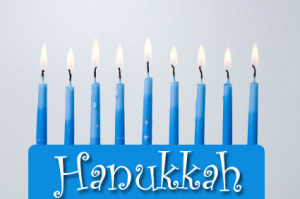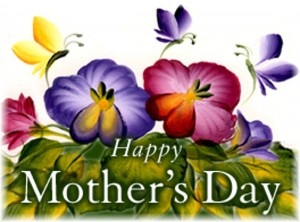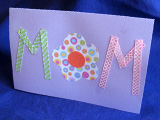Hanukkah (December 6 at sundown to December 14) ,Christmas (December 25) and Kwanza (December 26 TO January 1) are the major Holidays this month!
These holidays are a time of celebrating,giving and sharing. Our Arlington/Falls Church cluster is going to celebrate these holidays by attending a performance of the Nutcracker at the Warner Theatre and sharing some Holiday Cheers at their community counselor’s home .
If you are looking to get into the holiday spirit,here are some crafts ideas,no matter what holiday you celebrate,but you can find more under seasonal crafts or under the seasonal calendar on the au pair resources site.
Pencil Can Gift For Mom Or Dad. Wash out a soup can or a juice can. Children can decorate can with paint, glue and noodles, buttons, yarn, etc. Let dry and wrap as a gift.
Make Wrapping Paper: Need plain brown wrapping paper or white tissue paper, paint, pan, and cookie cutters, apples or potatoes. Pour paint into pan. Dip cookie cutter shapes (or apples cut in half, or potatoes cut in half with a design cut into them) into paint and make prints on the paper.
Traditions: Tell the children how you celebrate special holidays in your country.
Holiday Cards: Need construction paper, markers, stickers, glitter, crayons, paint. Fold construction paper in half to create a card. Decorate. Help children write a message inside.
Chanukah

Chanukah (also spelled Hanukkah), a Jewish holiday, is known as the Festival of Lights. It is a celebration of religious freedom based on historical events that occurred more than 2100 years ago. It commemorates rebellion against oppression, the first serious attempt in history for a nation to accept religious and cultural diversity.
Chanukah is celebrated for 8 days during the winter with the lighting of candles in a special lamp called a menorah or hanukiah. It is also traditional to exchange gifts or gelt (Yiddish for money), in the form of real coins or chocolate wrapped in gold foil, and to play a game of put-and-take with a four-sided top called a dreidel. The Hebrew letters on the sides of the top stand for words which mean a great miracle happened there.
The traditional legend of the miracle of Chanukah is that a single day’s supply of oil burned for eight days in the Temple in Jerusalem. Because of this Jews eat foods fried in oil on Chanukah, most often fried potato pancakes, known at latkes, and doughnuts, called sufganiyot in Hebrew.
As the essence of Chanukah is about the acceptance of cultural diversity, it is particularly appropriate for au pairs to join in the celebration. Helping children make simple gifts for each other and for their parents, or making Chanukah decorations for the house can add to everyone’s enjoyment of the holiday.
Christmas :

Christmas or Christmas Day is a holiday observed generally on December 25 to commemorate the birth of Jesus, the central figure of Christianity. The date is not known to be the actual birthday of Jesus, and may have initially been chosen to correspond with either the day exactly nine months after some early Christians believed Jesus had been conceived, the date of the winter solstice on the ancient Roman calendar, or one of various ancient winter festivals. Christmas is central to the Christmas and holiday season, and in Christianity marks the beginning of the larger season of Christmastide, which lasts twelve days.
Although nominally a Christian holiday, Christmas is also widely celebrated by many non-Christians, and many of its popular celebratory customs have pre-Christian or secular themes and origins. Popular modern customs of the holiday include gift-giving, music, an exchange of greeting cards, church celebrations, a special meal, and the display of various decorations; including Christmas trees, lights, garlands, mistletoe, nativity scenes, and holly. In addition, several similar mythological figures, known as Saint Nicholas, Father Christmas and Santa Claus among other names, are associated with bringing gifts to children during the Christmas season.
Kwanzaa:
Kwanzaa, or “First Fruits of the Harvest,” is an African-American and Pan-African holiday which celebrates and strengthens community, family and culture over a period of seven days. Kwanzaa begins December 26th. Each day, a principle of Kwanzaa is celebrated.
In order to appropriately cite these principles, the officialkwanzaawebsite.org describes these 7 Kwanzaa Principles, authored by Maulana Karenga, in this way:
Umoja or Unity: To strive for and maintain unity in the family, community, nation and race.
Kujichagulia or Self-Determination: To define ourselves, name ourselves, create for ourselves and speak for ourselves.
Ujima or Collective Work and Responsibility: To build and maintain our community together and make our brother’s and sister’s problems our problems and to solve them together.
Ujamaa or Cooperative Economics: To build and maintain our own stores, shops and other businesses and to profit from them together.
Nia or Purpose: To make our collective vocation the building and developing of our community in order to restore our people to their traditional greatness.
Kuumba or Creativity: To do always as much as we can, in any way we can, in order to leave our community more beautiful and beneficial than we inherited it.
Imani or Faith: To believe with all our heart in our people, our parents, our teachers, our leaders and the righteousness will victory of our struggle.
Note that the 7 Principles incorporate the words first in Swahili and then English.

 Mother’s Day is being celebrated on May 12th all over the United States.
Mother’s Day is being celebrated on May 12th all over the United States.






 Flower Card for Mom
Flower Card for Mom